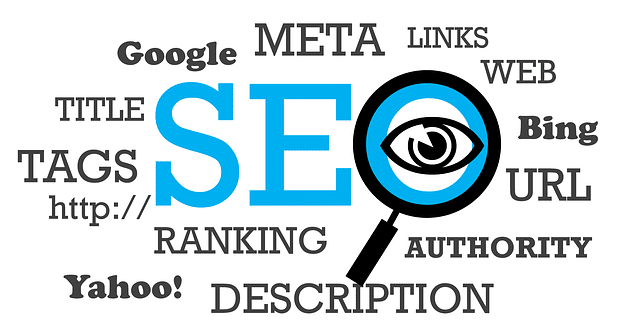-
Jul 08 2019 Conduct An SEO Audit With 8 Simple Steps
A detailed review of your SEO strategies – also known as an SEO audit – will allow you to analyze which areas are doing well and which need to be revamped to improve your Web site’s performance and rankings. Let’s take a look at how you can conduct a robust SEO audit with 8 simple steps!
Step 1 – Eliminate ‘Zombie’ Pages

Find out how many pages of your site have been indexed by Google by typing site:yourwebsite.com into Google. Research indicates that sites with 50% more indexed pages tend to miss out on substantial organic traffic. Remove these ‘extra zombie’ pages pronto Google traffic. This first step will help make the rest of the audit process much easier. While you’re at it, remove duplicate content and low-value pages, too!
Pro Tip – Make sure Google indexes only one version of your website, by redirecting it properly.
Step 2 – Check For Mobile-Friendliness

Over 60% of Google searches come from mobile devices. Hence, mobile SEO is more important than ever. Use Google’s Mobile-Friendly Testing Tool to discover if your site is considered mobile-optimized or not.
Step 3 – Analyze Keywords

Extremely crucial for SEO performance, keywords should ideally be long-tail (contain three words or more) – it helps attract more qualified leads for your business. Always use higher value keywords integrated with titles and meta descriptions, which allow your page to rank higher in search results.
Step 4 – Check Speed

A slow loading Website is a turn off for both customers and Google, as Google values user-experience a lot. Run a speed test and clean HTML page code. Also, compress your images using tools like Kraken, if needed.
Step 5 – Conduct A Security-Check

If your Website isn’t secure, customers aren’t going to spend much time on it. Furthermore, Google does not rank unsecure sites. During the SEO audit process, double check if your site is encrypted with HTTPS – it should be!
Step 6 – Keep Tabs On Organic Traffic

Use Google Analytics to find out how many times your site been searched for and visited in the last month. Set the dates to the last 6 months to know whether your organic traffic is moving in the desired direction or not. Flat traffic generally starts improving once the SEO audit is over (if you take the right action steps, that is!).
Step 7 – Compare With Your Competitors

Analyze where you stand compared to your competition. If all of them are using certain keywords, you may need to use other ones to get better results. Also monitor the content they are churning to understand which type is appealing to your audience base effectively.
Step 8 – Identify Errors

Crawl your site with tools like Screaming Frog, which is quite useful in recognizing site errors and fixing them to improve overall performance. Identify un-indexed and broken pages with error messages. Also, address broken links! Again, we can only emphasize the fact that Google values user-experience when ranking sites.
We hope these 8 steps help you conduct an SEO audit that improves your site’s performance. Need help? Contact our team right here!
Sources –
> www.optron.in/blog/seo-audit-checklist-updated
> www.webfx.com/internet-marketing/seo-audit-2019.html
> https://backlinko.com/seo-site-audit
> https://ahrefs.com/blog/seo-audit/ -
Jul 01 2019 Are You Making These 8 Avoidable SEO Mistakes?
When it comes to your company’s business strategy and SEO quality, you simply cannot afford to go wrong, which is why it is important to steer clear of mistakes that can cause you grief. With a plethora of content being promoted online every second, the need to capture your target audience’s attention and keep it intact has reached its peak. More than 2 trillion searches are being made on Google annually, making SEO vital in helping your product/service get its due attention. Avoid these 8 SEO mistakes to create supreme, user-centric and powerful content –
Mistake 1 – Choosing Incorrect Keywords

Keywords play a major role in the world of optimization, which is why choosing the right ones is imperative for your website. Don’t neglect the preferences of search engines and users – avoid opting for long-tail keywords. Focus on words your potential customers use while referring to your products/services. A bit of background research pays off. You might find tools like SEMrush, Google Trends and Google Adwords KeywordPlanner helpful.
Mistake 2 – Missing Out On Mobile Users

Smartphones are an indispensable part of our lives. Your content is bound to get negatively impacted if it is not mobile-friendly and responsive. Work on building SEO content targeted specially for mobile users to yield better results.
Mistake 3 – Publishing Poor Quality Pages

Coming up with meaningful content isn’t that difficult if you really plan it out properly, rather than rushing. Remember, haste makes waste. Poor quality pages do not add value to your page and might end up in the omitted results by Google! Also, if you think simply posting tons of high-res, pretty visuals is going to cut it, think again – algorithms NEED to see text, too!
Mistake 4 – Publishing Duplicate Content

According to Social Media Today’s findings, 65.88% sites have duplicate content. Duplicating content is a huge waste of both consumers’ time and Google’s resources – in fact, it might impact your SEO rankings negatively, altogether. In the world of SEO, having less, meaningful content is far better than publishing repetitive, low quality material.
Mistake 5 – Not Working On A ‘Google My Business’ Listing

Many businesses forget to claim and manage their Google My Business listing. While working on SEO content, do not forget the basic fact that Google places much importance on ‘near me’ searches. It helps small business reveal their address phone number and provide other relevant information, too.
Mistake 6 – Skipping Meta Descriptions & Title Tags

Simply including targeted keywords and coming up with quality content does not mean you’ve automatically optimized it. Essential elements of SEO, such as title tags and meta descriptions, must be included, too. It improves the content’s performance and ranking. Shockingly, a Social Media Today’s research indicates 63.28% sites have missing meta descriptions, and 53.99% sites even had duplicate meta descriptions; 10.53% missed out on title tags, 26.33% didn’t have enough text in the title tags and 53.23% had duplicate title tags. Goodness!
Mistake 7 – Being Unorganized With Internal Links

Social Media Today’s findings indicate 33.29% sites have broken internal links! Start using internal links to improve page views and time spent on your site by each visitor. Incorporate apt methods to give high-performing content enough visibility and attention. However, don’t go overboard, either – internal links should be added only if it is relevant and a value-add.
Mistake 8 – Failing To Add Relevant External Links

External links help provide relevant content, while also offering credibility to users and search engines. You can achieve this by ensuring all external links open in a new window, hence allowing users to access other content instantly, with the option of returning to your content with ease, too.
We hope you will go back and correct these eight common SEO mistakes soon! If you need help with SEO optimization, we are just one click away.
Sources –
> www.socialmediatoday.com/news/40-major-seo-mistakes-you-must-avoid-in-2019-infographic/548324/
> www.forbes.com/sites/forbesagencycouncil/2018/10/17/15-common-seo-mistakes-to-avoid/#6c50b1fbbe6a
> https://neilpatel.com/blog/seo-mistakes/
> https://cognitiveseo.com/blog/20859/major-seo-mistakes/
> www.toprankblog.com/2017/02/common-seo-mistakes-to-avoid/
> www.searchenginejournal.com/10-common-seo-mistakes/178734/#close


